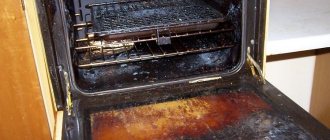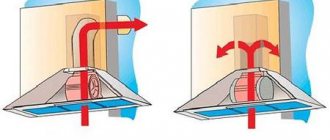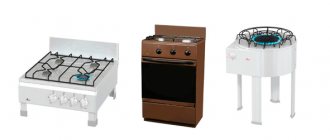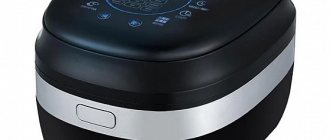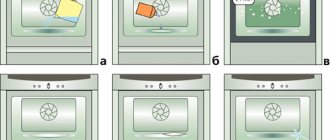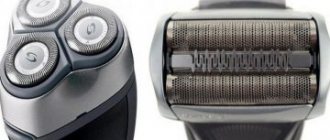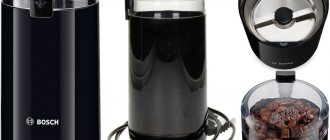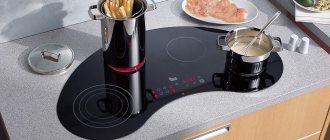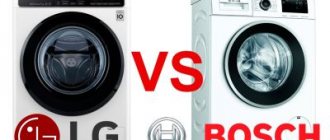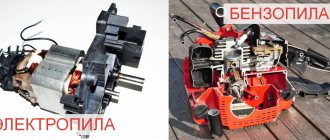In this article we will talk about catalytic oven cleaning, look at what it is and how it works.
Each of us loves meat with a crust, but everyone hates washing off the fat from the walls of the oven after that. However, some modern ovens are equipped with such a useful feature as catalytic cleaning, which helps solve this problem quickly and effortlessly. The process itself is that fat is dissolved due to chemical reactions that are triggered during cooking.
There are also ovens on sale with other cleaning methods - pyrolytic, hydrolysis, steam cleaning, ecoclean and aquaclean. Next we will look at the pros and cons of using these systems.
What does catalytic oven cleaning mean?
Catalysis is a process that speeds up chemical reactions, and in the case of oven cleaning, this means the accelerated conversion of fats released during cooking and deposited on the walls into water and soot (carbon).
- This process occurs due to the fact that the inner surface of the oven, namely the back and side walls, and sometimes the convector blades, are coated with the following composition:
- Porous fat-absorbing enamel.
- The catalyst is in the form of manganese, cerium, cobalt or copper oxide. Its particles, which fill the pores of the enamel, help accelerate the breakdown of fat adhering to the walls of the cabinet, breaking it down into carbon, organic residues and water.
- An absorbent containing nanoparticles.
Catalytic cleaning is performed automatically during maximum heating of the oven - at temperatures of 200-250 ° C. So, it occurs while the dish is baking, and you will not need to wait additional time or turn on a special mode. After the cooked food has been removed, all that remains is to wipe the back and side walls of the cabinet.
If it is necessary to remove complex contaminants remaining after catalytic cleaning, use a liquid detergent or powder without abrasive particles.
Basic operating principles
What is catalytic oven cleaning?
The process of catalysis is the acceleration of certain chemical reactions. This is exactly what happens in the bowels of your oven right during the preparation of any dish - the secreted fat settles on the walls and immediately turns into soot (carbon) and ordinary water. And this effect is caused by a special coating that is applied to the back and side walls, as well as to the convector blades.
Externally, such surfaces look like dark, rough enamel covered with small pores. It is in these recesses that a special chemical composition with a catalyst is contained, which, when heated, starts the oxidation reaction.
Catalytic oven cleaning is an absolutely harmless process for the human body, and its results cannot fail to impress.
The reaction starts when surfaces are heated to a temperature of 140 degrees, although it reaches maximum efficiency only at 200-250 degrees. Once you've finished cooking dinner, all you need to do is wipe down the surface of the oven with a damp cloth and it will look clean and new again.
- The mechanism of action on dirt is as follows:
- The manufacturer coats the inner walls of the oven with a special chemical - a catalyst, which, when reacting with fat, lowers its combustion temperature by two to three times.
- Without such a coating, the method cannot be used, but other, less effective non-contact cleaning methods can be used.
- Next, the heating element increases the temperature in the oven and the fat gradually begins to burn out, turning into ash.
- After the procedure, you just need to brush off these ashes with a dry cloth. There is no need to use any detergents, since it is very easy to clean, because everything that could stick is burned.
It should be said that without a special catalytic coating of the inner walls of the oven, this method cannot be used, since the temperature at which fat begins to burn is very high.
However, there are special types of ovens whose walls can withstand such temperatures. The cleaning procedure in this case is called pyrolytic.
Features of ovens with this cleaning system
- If you are inclined to purchase such an oven, it would be a good idea to learn about some specific features of this technique:
- Special enamel is destroyed when sugar and dairy products come into contact with it; for this reason, the bottom of the oven, where various liquids can regularly leak, does not have a special coating. They don’t apply enamel to the oven door either, which means that you will have to wash these parts “the old fashioned way,” by hand.
- Catalytic cleaning is a less effective method than pyrolysis - if too much fat is released during cooking, a certain part of it may remain on the walls of the oven and “burn” only during subsequent use of the device.
- Special oven surfaces require special treatment - soot can only be removed from them with a soft sponge and powder without abrasive particles that can damage the enamel.
- As you use the oven, the special coating on its surface wears off, and after 5 years you will have to purchase replacement side panels. You can install them yourself, following the attached instructions, and if necessary, calling specialists from the service center.
- Some stove models are equipped with panels with double-sided coating - in this case, after losing their self-cleaning ability, you only need to attach them with the reverse side.
The bottom of the cabinet has a regular surface. This is explained by the fact that self-cleaning enamel is afraid of sugar, and when baking pies or other products with a sweet filling, the risk of leakage is very likely. Also, surfaces with such enamel do not tolerate dairy products. So, the bottom of the cabinet should be cleaned of dirt with a soft sponge and any detergent.
Manufacturers of such stoves recommend purchasing an additional grease-absorbing filter. After installation, it needs to be cleaned periodically, and you can even wash it in the dishwasher, you just need to make sure that there are no other dishes or food residues in it, as they can get into the filter cells and it will stop working.
The grease-absorbing coating on ovens wears off over time, so the side walls will need to be replaced after about 5 years. The instructions for this household appliance have a section explaining how to do this yourself; you can also call a service specialist.
In some oven models, the side panels come with double-sided application of self-cleaning enamel; after one side is abraded, they only need to be attached with the reverse side, so there is no need to purchase new walls.
Catalytic filters and panels
Oven walls coated with catalyst are called removable panels. They can be either single-sided or double-sided, respectively, the latter are used twice - after 4-5 years they need to be turned over and installed on the other side.
This is, of course, more convenient than buying new ones. The panels differ in service life, catalyst concentration and catalysis coefficient, which is responsible for how many times the ignition temperature of fat is reduced during the cleaning process.
In addition to panels, grease filters are also used. They reduce the amount of plaque on the walls by accumulating it in special containers, which are then washed, but the oil must first be drained from them.
If the oven has a grease filter, the frequency of catalytic cleaning can be reduced by two to three times.
How to choose the right one
Catalytic cleaning is considered one of the simplest, so it is customary to select such models based on other criteria - the set of functions, maximum heating temperature, chamber volume, etc.
However, some useful tips from experts will help you avoid mistakes and choose the most successful option:
catalytic cleaning is suitable for users who plan to frequently cook at high temperatures. To prepare delicate dishes at a relatively low temperature, it is better to choose hydrolytic models;- catalytic panels can be installed only on the back wall, or on the entire internal surface of the cabinet (except for the door and bottom). It is recommended to choose the most secure models;
- It must be remembered that milk or sugar streaks not only remain on the surface, but also damage the panel. Therefore, for baked goods and other dessert-type products, it is better to purchase models with a different type of cleaning;
- There are different brands of catalytic enamel. It is recommended to choose an oven with an EcoClean system, which is highly durable and can restore its performance to some extent.
It will be useful to get advice from the seller and carefully study the instructions for the oven. This will not take too much time, but will give the most reliable answers to all questions that arise.
Pros and cons of catalytic purification
- Having understood what catalytic purification is, we can highlight its main positive features:
- starts automatically during cooking;
- saves your time and energy;
- suitable for use in any oven (both electric and gas);
- practically does not increase the cost of equipment;
- catalytic enamel has the same quality in models from different manufacturers;
- Almost all manufacturers produce similar ovens, so you can easily buy your favorite brand that has this function.
- Of course, this function also has certain disadvantages:
- it is less effective compared to pyrolysis;
- involves manual cleaning of the oven bottom, door and baking sheets;
- requires careful handling of removable plates, does not tolerate the touch of rough rags or abrasive powders;
- if dairy or sweet products come into contact with it, the special enamel loses its properties;
- effectively breaks down fat only with regular use of the oven;
- requires periodic replacement of specially coated plates.
Taking into account all the details considered, we can conclude that such a technique is ideal for housewives who use the oven quite often and do not have the opportunity or desire to purchase expensive models of ovens with a pyrolysis function.
If you are planning to purchase an oven with such a coating, carefully inspect it before purchasing and check with the seller for any additional details.
Sometimes manufacturers do not install special panels on the walls before selling them, and they simply lie inside the appliance along with grates and baking trays - this should also be taken into account.
Advantages and disadvantages
- Catalytic purification has the following strengths:
- all chemical processes take place automatically under the influence of high temperature and catalysts in the pores of the enamel;
- it is possible to reduce energy consumption, since cleaning occurs directly during cooking;
- catalytic purification is absolutely harmless for the human body;
- slightly increases the cost of the oven.
As for the disadvantages, they are as follows:
- it is necessary to manually wash the baking sheets, grill, and grate guides;
- the bottom and inner surface are not treated with an enamel coating, so they will also have to be cleaned manually;
- sweet and dairy products quickly destroy the protective coating on the side walls;
- effectively breaks down fat only with constant use;
- there is a need to replace the plates after 4-5 years of operation, as they lose their properties.
Recommendations for use
- To ensure that catalytic cleaning does not lose its speed and effectiveness in breaking down fats over time, you should follow the following recommendations:
- treat the catalytic surface with care, refusing to use hard sponges to clean fat after oxidation;
- If sugar accidentally gets on the catalytic surface during cooking, you should clean it in the classic way, that is, using a gentle detergent and a soft sponge;
- When cleaning by hand, you should completely avoid abrasive detergents, as they will destroy the enamel.
It should be noted that abundant fat is completely burned after several cleaning cycles, so after the first catalysis, you should not immediately grab a rag to manually remove fat.
Are there any disadvantages
Despite the positive reviews that the new development is receiving, it has several negative aspects. They must be taken into account when purchasing equipment.
- If, when frying meat, too much fat gets onto the porous enamel, the system does not always completely cope with its breakdown. Therefore, large dirty areas can only be cleaned after repeated use of the oven.
- Some pieces of equipment have to be washed the old fashioned way - by hand. This applies not only to the door and bottom wall, but also to the baking sheets, grill, and grate.
- When the walls of the equipment are not coated on both sides, purchasing new parts can hit the family budget hard. Their average cost depends on the brand of stove and ranges from 2000 to 4000 rubles.
Important!
Do not forget that the applied catalytic coating can be easily damaged and this will greatly reduce its service life. When cleaning soot, into which fat is converted, do not use cleaning powders, scrapers, or brushes. Only clean water and a soft sponge or cloth are allowed.
Types of oven cleaning
The catalytic oven cleaning system is not the only touchless, automated grease-fighting mechanism of its kind.
In addition to it, two more methods are common - pyrolytic and steam, but they are also not the only ones.
In addition to them, there are a lot of other equally effective, but much more expensive technologies used in large food production.
Traditional
What is traditional oven cleaning? The traditional cleaning system is called the usual, “grandmother’s” methods. Sponges, special powders and liquids, as well as folk remedies for removing carbon deposits are used here.
- The disadvantages of this method are obvious:
- time-consuming and labor-intensive process;
- the need to clean trays and grates separately;
- risk of damage to surfaces.
- The advantages include:
- traditional cleaning does not require the use of electricity and is therefore considered the cheapest;
- Ovens of this kind are less expensive.
Hydrolytic
What is hydrolysis oven cleaning? It was used to clean the first gas ovens. This is the simplest, but quite effective way to clean the insides of the oven from dirt.
Some oven models have built-in hydrolysis systems:
- Aqua Clean.
Operates at a temperature of 50 °C. It is proposed to pour 0.5 liters of water or a gentle detergent into a special container, after which you can close the door and wait for a click indicating the end of cleaning. As a rule, it will take about 30 minutes.
- Cleaning.
For this you will need to preheat the oven to 90°C. Instead of water, a spray is used to protect the oven. This product must be used to treat the inner walls of the oven after the door clicks open. Cleaning lasts 15 minutes.
Cleaning is carried out within half an hour. First, water is poured into a specially provided round recess at the bottom of the oven; in some cases, gel is also added to it to create steam. When the oven heats up, the water evaporates and affects the fatty deposits on the inner walls. So, they soften and go into the pan.
After finishing the cleaning process, you need to remove all food residues with a napkin.
Hydrolysis cleaning is not an automatic method, since manual labor is not excluded when using it, however, it still makes the housewife’s work easier, as it helps remove fresh grease stains faster and without much effort. If they are already very dry, you cannot do without treating them with a cleaning agent and intense rubbing with a sponge.
- Pros of hydrolysis:
- Low cost of the cleaning process - there is no need to spend money on expensive detergents and use a lot of electricity, since the process operates at low temperatures.
- Making the housewife's work easier.
- Safety – the doors do not overheat during cleaning.
- Disadvantages of hydrolysis:
- After the cleaning process, some dirt remains that must be removed manually.
- Does not remove old stains.
- Cleaning is carried out only when the oven has completely cooled down. It should not be turned on immediately after cooking.
Pyrolytic
What is pyrolytic oven cleaning?
This is the most effective way to clean the oven, but also the most aggressive, and its action affects all the internal surfaces of the oven. It burns all fatty contaminants, which become ash and settle on the bottom of the oven. They can be easily removed with a regular kitchen napkin. Pyrolytic cleaning is carried out at high temperatures reaching 500 °C. Thus, for safety reasons, models with such a system have automatic locking in the doors, which opens the cabinet door only after the oven has cooled to 200 °C.
In some models, this cleaning can occur at a temperature of 300 ° C, since they have a multi-level system. For minor contamination, a gentle mode is used in this case.
Pyrolysis is carried out with high power consumption, so the oven with it requires a power cable that can withstand up to 6 kW.
- Pros of pyrolysis:
- There is no need to constantly empty the oven from trays and racks before cleaning.
- Ovens with this system are made of high quality steel.
- The most effective method of all those described above, after which no contaminants remain.
- Disadvantages of the process:
- The built-in pyrolytic system affects the cost of the oven, increasing its price.
- Cleaning is carried out after cooking, and since it requires the oven to be heated to very high temperatures in order to be effective, you will incur hefty electricity bills.
- Pyrolysis is accompanied by an unpleasant odor, so it is necessary to install a powerful hood above such an oven.
- The oven door becomes very hot. During the cleaning mode, it is better that no one is in the kitchen, so as not to accidentally get burned.
Ecoclean
Ecoclean oven cleaning - what is it? Units with this type of purification appeared relatively recently. The walls of the oven are covered with special ceramics; when fat penetrates this material, it splits, turning into water and carbon dioxide. This process occurs provided that the oven is well heated.
If the walls are not cleaned enough during the cooking process, heat the empty oven for 40–50 minutes and the surfaces will get rid of plaque and soot.
The main advantage of such coatings is their service life. The self-cleaning system can maintain functionality for up to 10 years under regular use.
Aquaclean
What is Aquaclean steam cleaning?
Aqua clean is an oven function designed to clean your oven. This is a special impregnation that allows you to get rid of dirt using water. It can also be called hydrolytic cleaning, since cleaning occurs with water. Separately, the function is translated as aqua - water and clean - cleaning.
- Types of ovens with Aqua clean:
- multifunctional;
- electrical;
- built-in;
- standard;
- multifunctional.
The operating principle of the Aqua clean function is as follows. To clean using this function, we need half a liter of water. We pour water into a baking tray and turn on the Aqua clean function. The temperature should be 70 degrees Celsius.
The work process takes about half an hour. Cleaning with this function occurs due to steam released from water using temperature. During cleaning, steam softens grease and dirt from the inner walls. Afterwards, all we have to do is wipe it with a damp cloth or cloth.
But it may be that the inner walls of the oven are completely contaminated with grease. This accumulates due to the fact that the ovens were not cleaned on time. After all, the Aqua clean function gives a cleaning effect only if the dirt has not yet dried.
Otherwise, cleaning will need to be carried out in the traditional way. Everything will need to be washed by hand. To make this work easier, ovens are coated with special enamel.
- Ovens with aquaclean function are:
- multifunctional;
- have a large area;
- the shape of the oven is vaulted;
- doors close smoothly;
- double or triple glazing with thermal layer.
In addition to Aqua clean, there are other self-cleaning functions, these are pyrolytic and catalytic cleaning functions. All these functions are different from each other. How does the Aqua clean function differ from the pyrolysis and catalysis functions in the oven?
- Differences:
- Unlike pyrolysis, the hydrolysis function requires infrequent cleaning; an oven with a hydrolytic cleaning function must be cleaned after each use;
- requires additional activation of the oven, unlike catalytic cleaning
- in the kitchen the temperature does not heat up, but with the pyrolytic cleaning function it heats up, since a temperature of 500 degrees Celsius is used there;
- for the same reason, due to the fact that in an oven with a pyrolysis function, the temperature reaches up to 500 degrees Celsius, there is a chance of getting burned, which is not the case with the Aqua clean function;
- cleaning is not fully automatic, unlike pyrolysis.
For easy and quick cleaning, steam cleaning can be used in the oven in conjunction with special oven coatings. SilverMatte is a pyrolytic enamel that can also be used for easy cleaning. An example of such a function would be the Gorenje oven model BO5333RBR.
- Advantages:
- does not require any detergents;
- cleaning the oven requires no effort if you just pour water into the pan and turn on the function;
- ease of cleaning;
- the cost of an oven with the Aqua clean function is low;
- low power consumption.
Ovens with this cleaning Aqua clean can be purchased by many. Compared to purification by pyrolysis or catalysis, they are not as expensive. At the same time, they are high quality and reliable. Ovens with Aqua clean cleaning are produced by ASKO, Gorenje, Bosch and others.
Which oven cleaning is best?
What is the best oven cleaning method?
Pyrolytic cleaning, in contrast to the catalytic method, is more aggressive, and in it the combustion of food residues occurs at a temperature of 500 ° C. During the cleaning process, the door is locked, accumulated fats and dirt are completely removed from the inner surface of the oven. This cannot be said about the catalytic method, in which if during cooking there are many large stains of grease on the walls of the oven, after one cleaning they may remain and will need to be removed manually.
But ovens with catalytic cleaning do not consume electricity, since it is produced simultaneously with the preparation of the dish, and the front wall of the cabinet does not heat up to high temperatures.
When using pyrolytic cleaning, be sure to ensure that children and animals do not come close to the household appliance, otherwise they may get burned. In this regard, the catalytic system is absolutely safe.
- Steam cleaning (hydrolysis) cannot be called automatic, since it is carried out according to the following scheme:
- After completing the cooking process, water is poured into the oven together with hydrolysis-enhancing agents into a specially provided tray.
- The device turns on for a certain period of time specified in the instructions.
- After heating the cabinet, the water turns into steam, which affects the fatty accumulations located on the walls of the device, they split and flow into the pan, taking the place of evaporated moisture. If the cabinet is very dirty, then manual cleaning after this method cannot be avoided.
So, everyone chooses independently which oven with which cleaning is preferable for him. However, we can say for sure that if you need a self-cleaning oven that also uses electricity economically, models with catalytic cleaning are the best option for you.
Catalytic cleaning can be used in electrical and gas cabinets. This is a convenient way to keep the device clean, however, it is as effective for severe contamination as the pyrolytic method, but not as aggressive.
This system does not increase the cost of the selected oven, but after purchasing it, it saves energy and time for cleaning the kitchen.
Pyrolytic or catalytic
The pyrolytic method is considered one of the most effective.
This cleaning is simply irreplaceable if the oven is used frequently. Under the influence of high temperatures, fat simply burns, which leads to complete self-cleaning of the oven. No additional effort is required from the hostess.
- The following factors can be identified as disadvantages of such a system:
- required wiring power 6 kW;
- high electricity consumption;
- high heating of the oven for cleaning (up to 500°) and heating of the entire unit itself.
When using this method of cleaning, it is better to somehow protect the furniture that is nearby from aggressive influences.
With the catalytic method, energy consumption is not so great. Special enamel promotes the oxidation of fat with its subsequent breakdown, which greatly facilitates cleaning. In addition, you can clean the surfaces during the cooking process, which cannot be said about the previous option, since it requires very high heat.
However, catalytic systems do not last forever and enamel-coated panels have to be replaced. They are designed for 300 hours of operation. In addition, the panels only protect the walls of the compartment, and everything else will have to be cleaned manually.
So, which is better: pyrolytic or catalytic oven cleaning? It is impossible to give a definite answer to this question; it all depends on the frequency of use of the baking compartment. If you cook food in the oven very often, then it will get very dirty. In such a situation, pyrolytic cleaning is the best way out.
But if you only use your oven occasionally, why the extra expense? The catalytic system will perfectly clean the unit.
Catalytic or steam cleaning
Catalytic cleaning is carried out directly during the cooking process. You do not need to run the oven additionally and waste electricity to get rid of fat and soot on the walls.
What is steam oven cleaning? As for steam cleaning, the situation is different. The principle of operation of such a system is that fat and plaque are softened under the influence of steam. To do this, you need to place a container of water inside the compartment and preheat the oven for some time.
It is impossible to combine this process with cooking. You will have to wait until the cooking is complete and the surfaces have cooled.
If we talk about financial costs, then the catalytic system will cost you more, since the panels will need to be changed periodically. And when buying an oven, you will pay more for this version of the product than for a unit with a steam cleaning function.
Catalytic or hydrolysis
As mentioned above, hydrolysis is a cleaning method using water vapor, and with a catalytic system, surfaces get rid of plaque and carbon deposits due to the characteristics of the panel coating.
Both methods are used not only in electric, but also in gas units, and this is a plus.
Continuing the comparative analysis, we can say that hydrolysis saves money (there is no need to purchase cleaning agents), and the catalytic method saves physical effort when washing surfaces, since it neutralizes grease. In addition, the catalytic panels will have to be replaced over time.
Which method is better is up to the hostess to decide; in this situation, it all depends on personal preferences.
Oven Cleaning Type Comparison Chart
To decide which cleaning method is more attractive, you should pay attention to the summary table with the key comparison parameters:
| Hydrolysis cleaning | Catalytic cleaning | Pyrolytic cleaning | |
| Principle of operation | When exposed to steam, grease stains are broken down into soot and water. | Accelerated breakdown of fats under the influence of catalysts present in the pores of the enamel that covers the side walls of the oven | Grease stains and dirt turn into ash under thermal influence |
| Energy consumption | Minimum | Average | Maximum |
| Temperature | 50 to 90 degrees | 140 to 250 degrees | Up to 500 degrees |
| Need for manual cleaning | Eat | Eat | Eat |
| The need to replace parts (filters, panels, etc.) | No | Eat | No |
| The need to use detergents | Eat | Eat | No |
| Frequency of application | After every cooking | After every cooking | As it gets dirty |
| Efficiency | Removes simple, fresh grease stains | Removes fresh grease stains of any complexity | Removes fresh and old stains of any complexity |
| Price | Low | Average | High |
Rating of models with this function
Convenience and a favorable combination of price and capabilities have caused high demand for ovens with catalytic cleaning. Therefore, all leading manufacturers have several models of this type in their assortment.
Beko BIM 22304 XCS
The chamber volume is 71 l, 8 heating modes are available, recessed switches prevent accidental changing of the operating mode. Cost 30,000 rubles.
Bosch HBJ558YS0Q
Oven with independent installation type, 8 heating modes, chamber volume 66 l, maximum heating 275°. Cost 31,000 rubles.
Electrolux OPEA 4300 X
Independent type cabinet, compact size with a 55 l chamber, 7 heating modes, maximum temperature 250°. Cost 18,000 rubles.
Gorenje BO758A31WG
The case is white, there is an external timer, all types of heating, a door with triple glass. Cost 50,000 rubles.
Hansa BOEI69422
The oven has 10 heating modes, the maximum temperature is 250°. Cost 25,000 rubles.
Korting OKB 792 CFW
Chamber 65 l, 9 heating modes available, tact rotary switches. Cost 37,500 rubles.
Fornelli FEA 45 Sonata
Compact cabinet with a chamber volume of 45 l. There are 9 heating modes, convection, 1 year warranty. Cost 40,000 rubles.
Expert opinion
Borodina Galina Valerievna
Analyzing the properties of these models, one can note a noticeable difference in their cost. It is determined by the range of functions and other design features of the ovens. The type of cleaning in this case is not the determining factor.
conclusions
What is the best type of oven cleaning? Everyone finds the answer to this question themselves. In some cases you save time, and in others you save money and electricity.
When considering various options, to make a final decision, find for yourself the answer to the question: what is more important, savings or your own comfort?
Is it better for you to pay more and buy a unit with pyrolytic cleaning so as not to worry about the condition of the oven, or invest less money and still put in the effort to keep it clean?
If you use your oven occasionally, you won't have to clean it often, and an economical option will do just fine. But in any case, the choice remains with the hostess.
Author: Sergey Vladimirovich, electrical engineer. More about the author.
